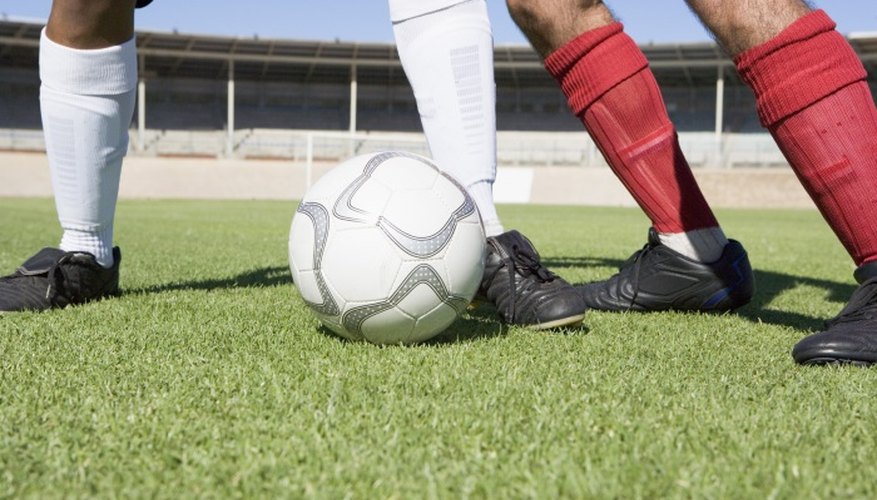Sometimes the difference between two football players of relatively equal skill is the desire to compete. The ability to play aggressive football when needed is what makes a striker willing to sacrifice the body to score a big goal, what makes a goalkeeper brave enough to dive at the feet of an onrushing attacker, what makes a crafty midfielder willing to take on a defender one-on-one, and what makes a stalwart defender willing to go in for a hard tackle. Some individuals are naturally more aggressive than others, but there are certain tactics coaches can use to help players become more aggressive.
Introduce training drills that replicate aggressive play. Drills like Protect the Ball (two players partner up, one player shields and protects the ball, and the other player tries to take the ball away) and Anything Goes (two teams of up to eight players compete in a small area of about 30 yards by 30 yards, with goals and goalkeepers, and defenders are allowed to push and pull) allow players to learn how to deal with aggressive play and be aggressive themselves. These sort of activities must be closely monitored so safety is maintained.
Emphasise the need to play within the rules. Players need to understand that the pushing and pulling that can occur in training exercises like the above-mentioned drills are outside the rules of the game, and coaches must make sure the drills don't get out of hand and allow things like kicking, tripping, and punching. Aggressive play is something to encourage, illegal play is not.
- Sometimes the difference between two football players of relatively equal skill is the desire to compete.
- Players need to understand that the pushing and pulling that can occur in training exercises like the above-mentioned drills are outside the rules of the game, and coaches must make sure the drills don't get out of hand and allow things like kicking, tripping, and punching.
Praise and reward instances of aggressive play. This can be done in training or in matches and is as simple as saying something like "good job" after a player shows a willingness to go in for a hard tackle, outwork their opponent for a loose ball, or make a hard play to win a ball and set up a teammate for a score. At the older ages, roughly 16 and above, players who are less aggressive and seem to disappear for long stretches may also find their game minutes cut on competitive teams while players who are willing to hustle and take measured risks may end up with more time on the field.
